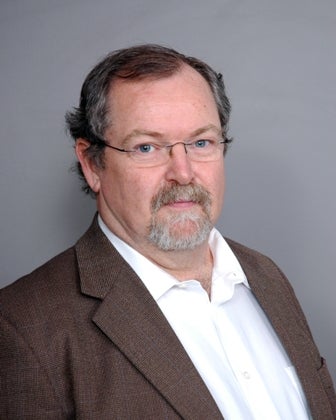Although he spent some of his childhood collecting rocks, for Waterloo Science grad Neil Novak (BSc ’77), his love for geology was discovered when he began his undergraduate studies.
I initially enrolled in general science with no major in mind, and had Earth Sciences as one of my electives, he says. Earth Sciences ended up being one of the sciences that I enjoyed learning about most in first year, so when it was time to choose a major, that’s what I selected.
Though Neil did not choose to go into the co-op program, which was relatively new at the time, he still benefitted from his association with classmates who were in the co-op stream.
The older students really helped my personal confidence, Neil says. Listening to their field job experiences continued to intrigue me and being close to the co-op students allowed me to have access to interviews and summer job opportunities.

Neil began his career at Pancontinental as a project geologist, heading up a five-man exploration project looking for uranium deposits in a vast area of northern Quebec.
I was the go-to geologist on projects for field operations and eventually became project manager, he says.
This job introduced me to many contacts at very senior levels, as well as providing a lot of experience organizing other exploration projects throughout Canada.
After being laid off from Pancontinental due to the market downturn in 1983, Neil decided to start up his own private exploration service company.
I wanted to provide exploration management services to the industry focusing on the junior sector, he says. I incorporated the consulting service company as Nominex Ltd.
Neil’s clients ranged from small juniors right through to major clients, all of whom wanted Nominex’s services for a few months at a time on a project-by-project basis as their budgets permitted. Many of his clients were repeat customers, hiring Neil each exploration season, providing continuity in their programs, much like they had prior to the downturn in the market when the norm was to staff up with geologists, he had found a niche in the industry.
In 1992, one of Neil’s clients had a conceptual idea to explore for diamonds in the James Bay region of Northern Ontario, so Neil joined forces with other mining industry colleagues to form a new company, called Spider Resources.
I was asked to be the consulting geologist and exploration manager for the first year or so, Neil says. After a few successful seasons of exploring, I was asked to join the Board of Directors and was appointed Vice-President of Exploration.
Neil was later appointed the job of Chief Operating Officer, then eventually President and CEO.
In 2007, as a result of his work in the James Bay region of Northern Ontario, Neil became one of the discoverers of the “Ring of Fire,” (ROF) considered to be one of the greatest geological finds in northern Ontario in recent years. Neil was the geologist who first recognized the potential of the area, located in the muskeg swamps of the James Bay Lowlands.
I was responsible for drilling the first holes into most of the ROF discoveries, Neil says. The metals that have been found to date, including nickel, copper, platinum, and palladium, are estimated to have in situ values of nearly 100 billion dollars.
The impact of this discovery is very significant. Various mining companies are involved in advancing projects in the ROF and the first project to be brought into production will likely provide 1,000 direct jobs and numerous related jobs throughout Ontario.
Neil’s contributions to the mining industry have not gone unnoticed. At the 2010 annual convention of the Prospectors and Developers Association of Canada (PDAC), Neil was co-recipient of the prestigious Bill Dennis “Prospector of the Year Award.” This award is presented to individuals or groups who have made a significant mineral discovery, offered noteworthy contributions to the PDAC, or have been involved in some important service or technological invention or innovation that helped improve the Canadian prospecting and exploration industry.
Currently, Neil is president and CEO of Black Widow Resources, a private company he created in January, 2011.
The original idea was to create a corporate vehicle that I personally controlled that would acquire selected “Spider” projects orphaned by the takeover of Spider Resources last year by Cliff Natural Resources, Neil says.
Neil’s role at Black Widow involves all aspects of managing the company, raising the necessary capital to acquire and explore the projects, and to proceed with making the private company a publicly traded one on a Canadian Exchange.
I am hoping to have enough financing to go public this fall, Neil says. Our current projects include base metals in the ROF and Timmins area, diamonds in the James Bay Lowlands, gold in Timmins, and silver in Mexico.
Other projects are currently being negotiated for by Neil.
Neil has found a field he loves and recommends earth sciences students follow their passion. Identify a sector of the industry you love, but develop a good working knowledge of other types of geological environments, Neil says. One can specialize in one type of geological environment, but this might limit the doors that are there to be opened.